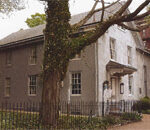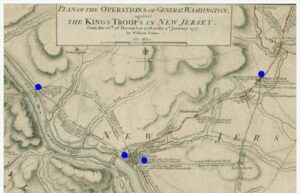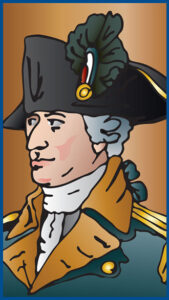Quaker Friends Meeting House of Trenton
 The original meeting house, built by William Plaskett in 1739, was of plain red brick and faced Montgomery Street, then known as Quaker Lane. The entrance was in the end of the building, on Third, now Hanover Street. There was one long room inside which was later divided into the hall and a room for worship. The facing benches where the officers were seated are in the same position today. There were two long benches for the membership. When first erected, the house was thirty by forty feet, one story high, with a hip roof.
The original meeting house, built by William Plaskett in 1739, was of plain red brick and faced Montgomery Street, then known as Quaker Lane. The entrance was in the end of the building, on Third, now Hanover Street. There was one long room inside which was later divided into the hall and a room for worship. The facing benches where the officers were seated are in the same position today. There were two long benches for the membership. When first erected, the house was thirty by forty feet, one story high, with a hip roof.
Although many changes and enlargements have been made to the Meeting House during its two hundred and twenty-five years of existence, the greatest changes have been those it has witnessed as the city developed around it. Its once quiet corner has become one of Trenton’s busiest traffic centers while the shadows of modern bank and office buildings have taken the place of those cast by the orchard where the Hessians surrendered at the Battle of Trenton in 1776. Under its roof, the British Dragoons, and later, the Continental soldiers, each in turn found shelter. Here also in 1776, was held a meeting of the Convention of New Jersey Province.
In the burying-ground adjoining the Meeting House are buried many citizens who played prominent parts in the early history of the city. Among these are Dr. Thomas Cadwalader, first burgess of the free borough of Trenton, 1746-50; Colonel Lambert Cadwalader, his son, who was a member of both the Continental and Federal Congresses: General Philemon Dickinson, head of the New Jersey militia in Revolutionary days; Richard Howell, Governor of New Jersey, 1792-1801; and George Clymer, a signer of the Declaration of Independence. A copy of an engraving by John Sartain after a miniature of George Clymer by Benjamin Trott, probably made about the year 1788, now hangs in the library on the first floor of the Meeting House.


